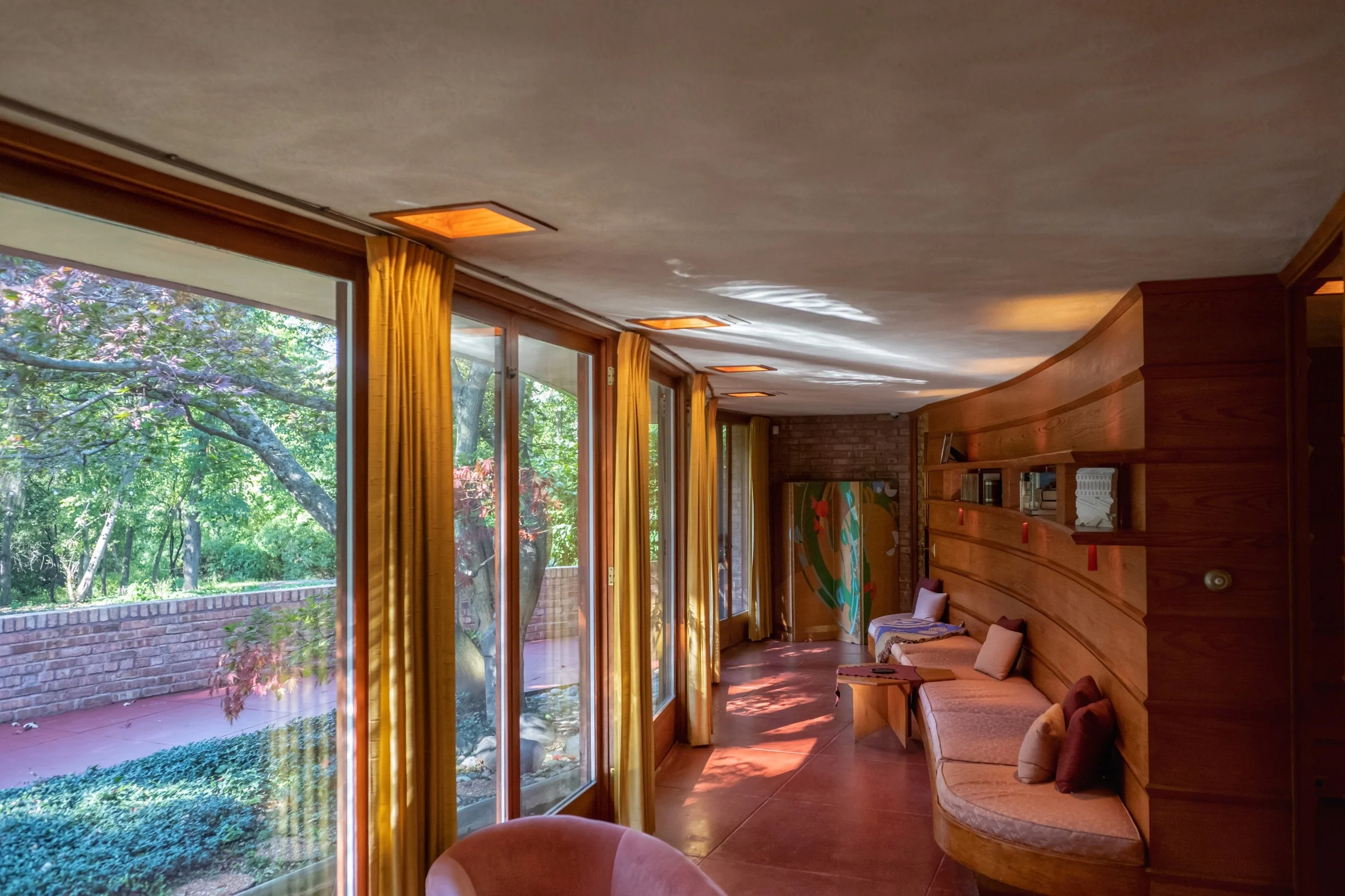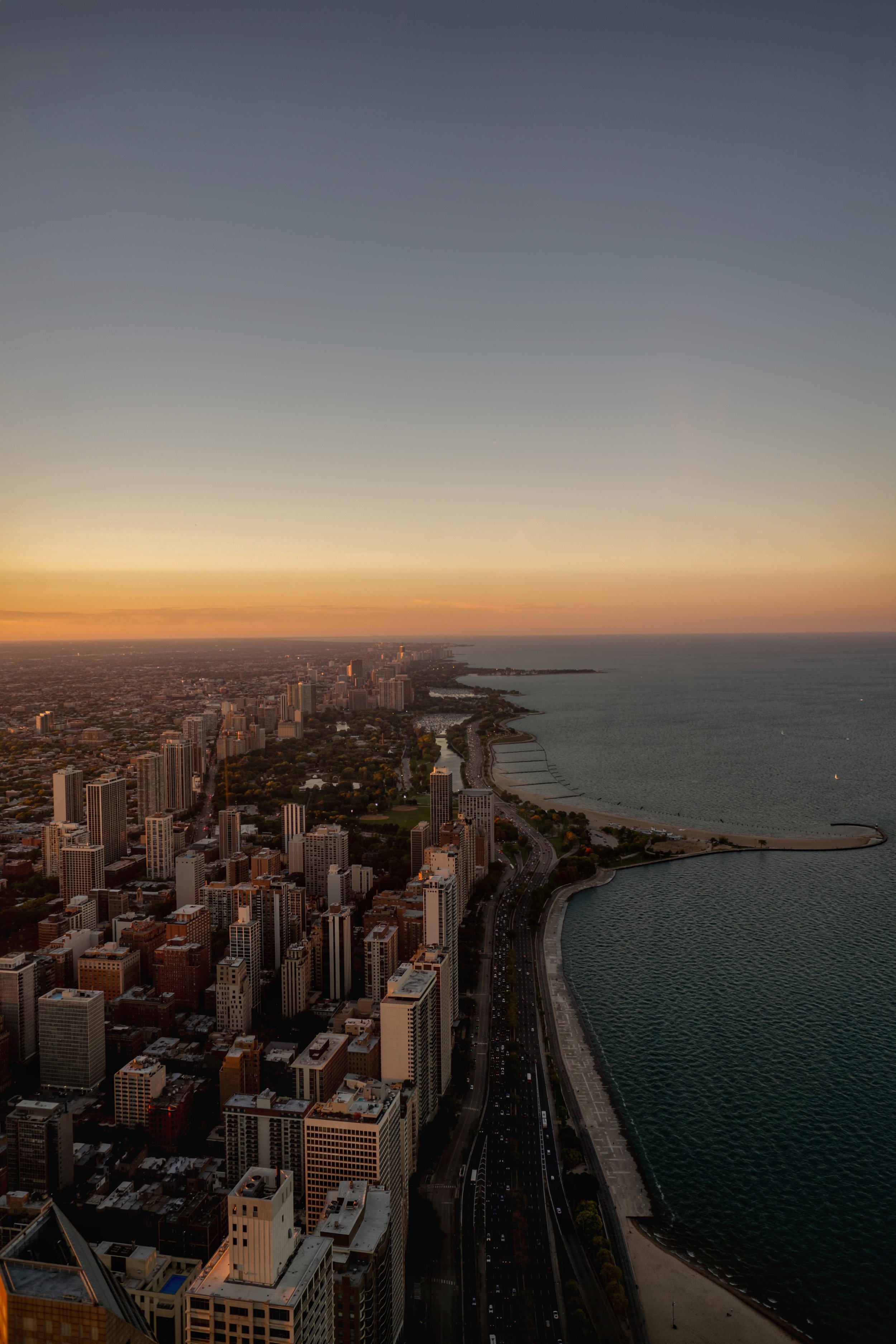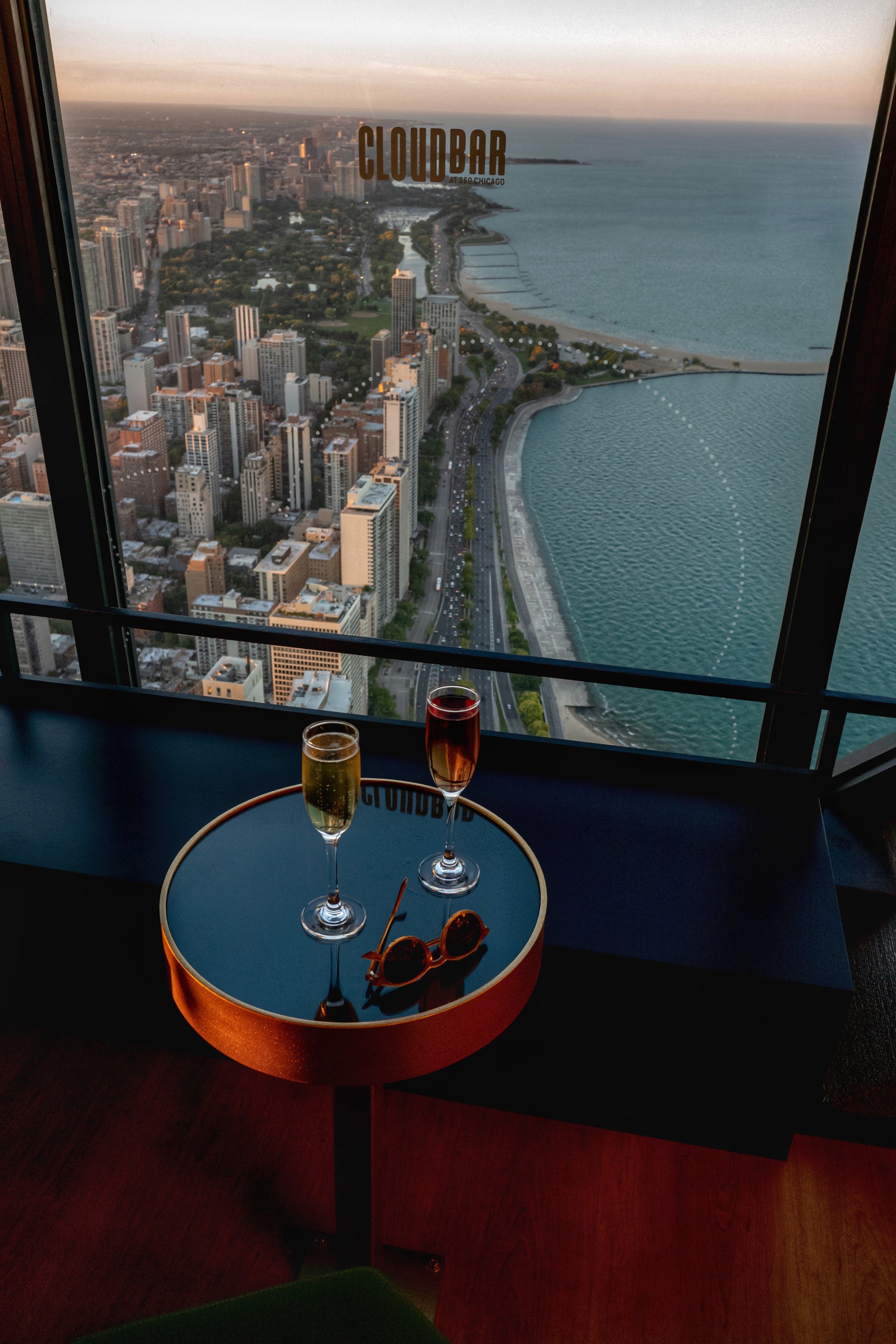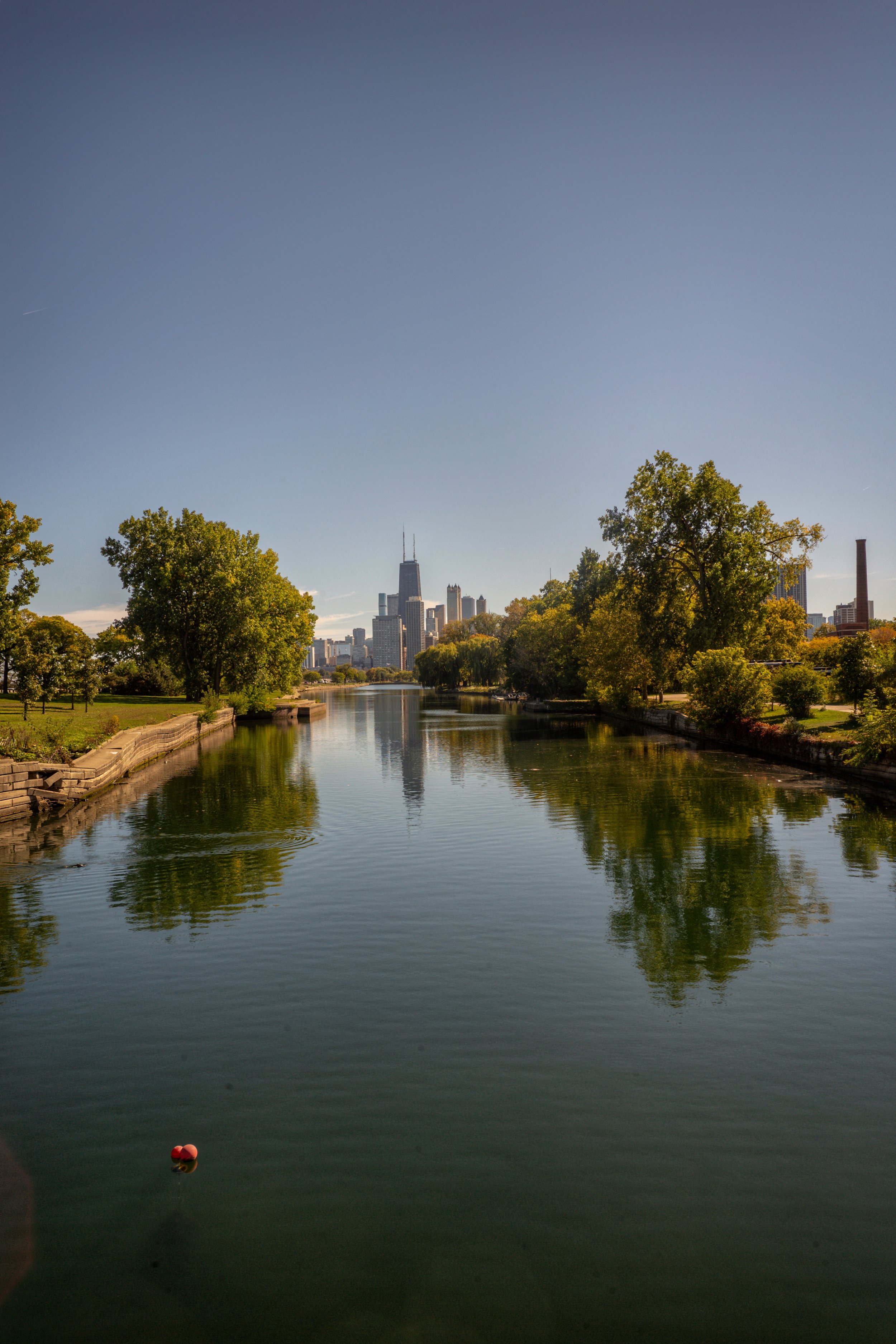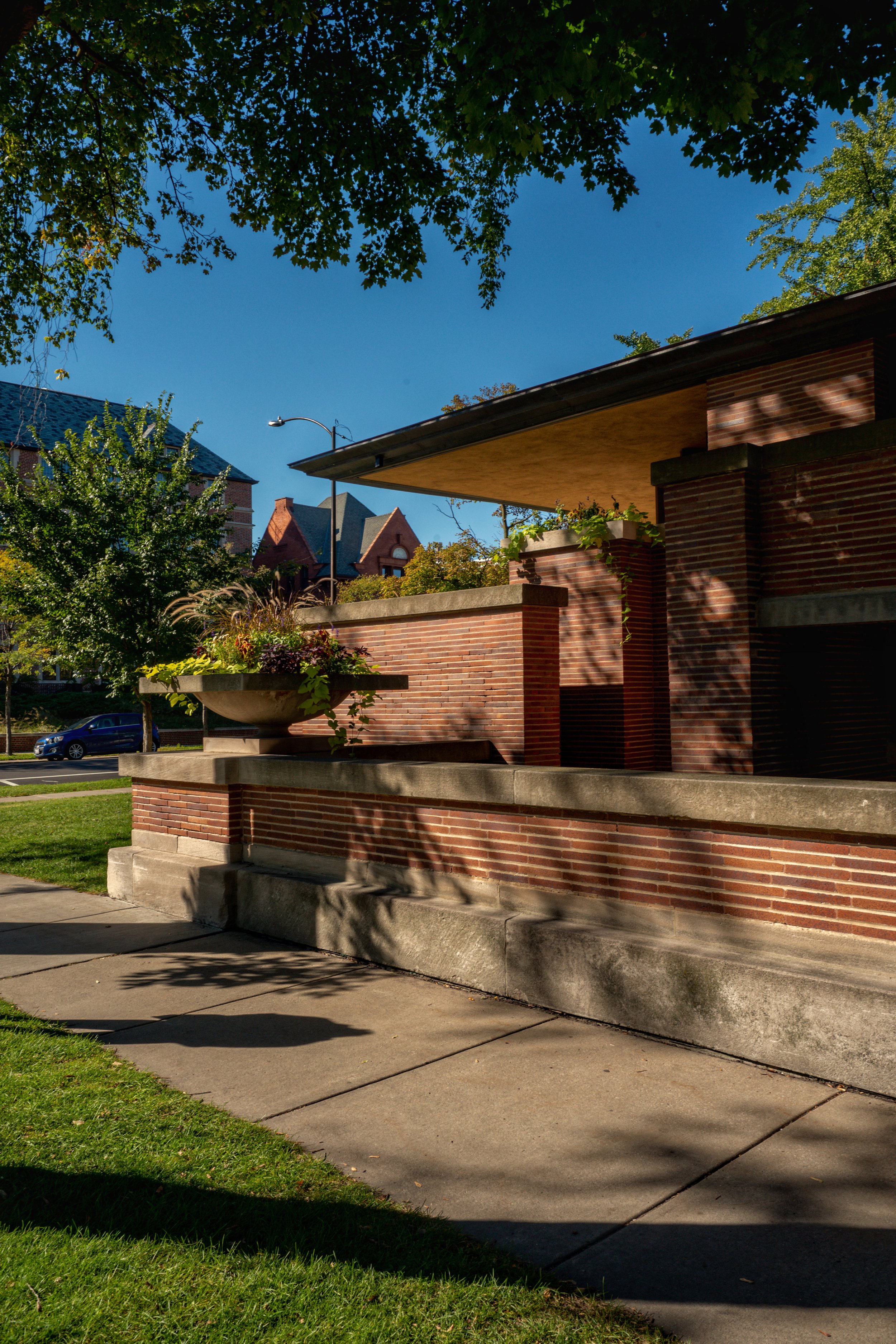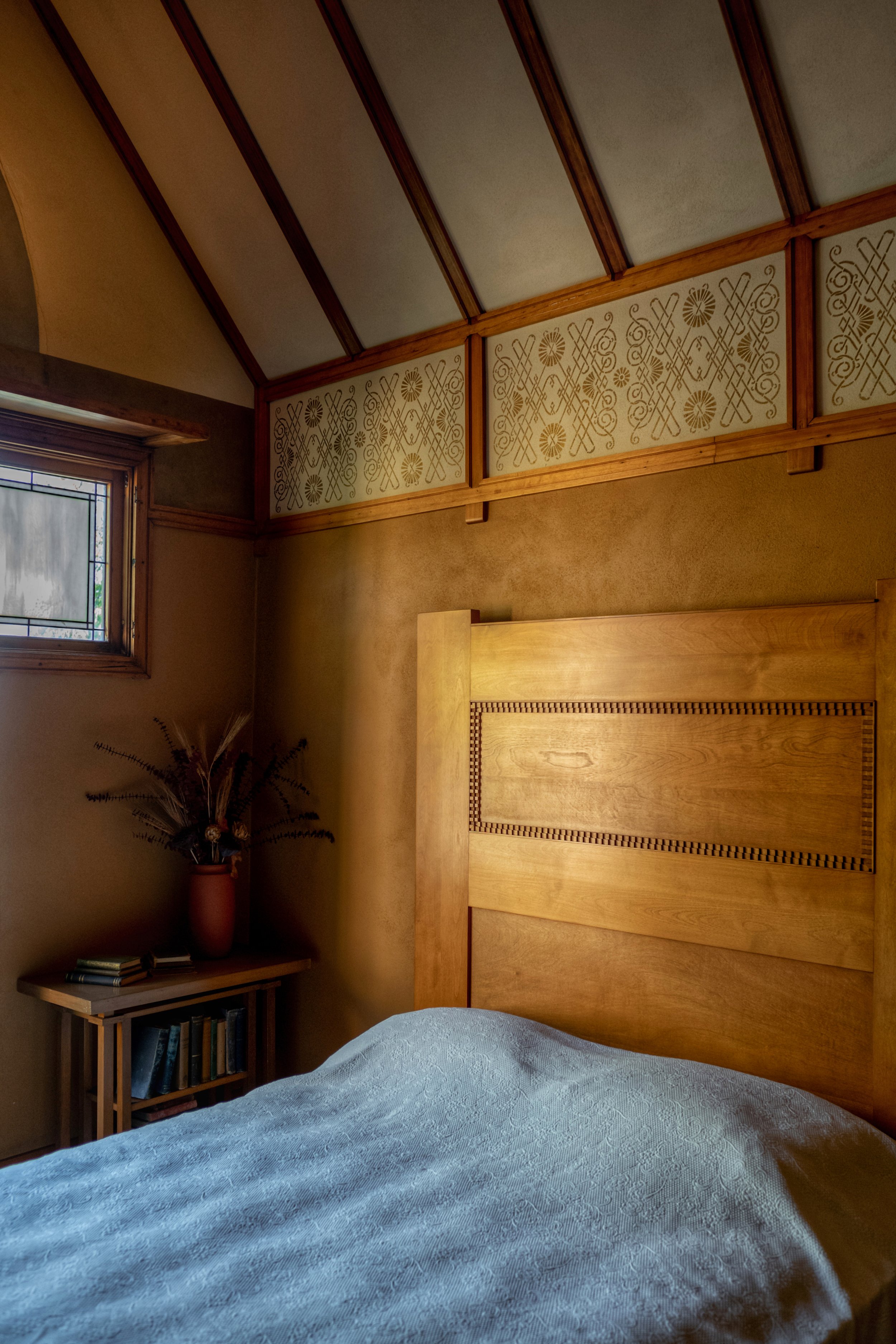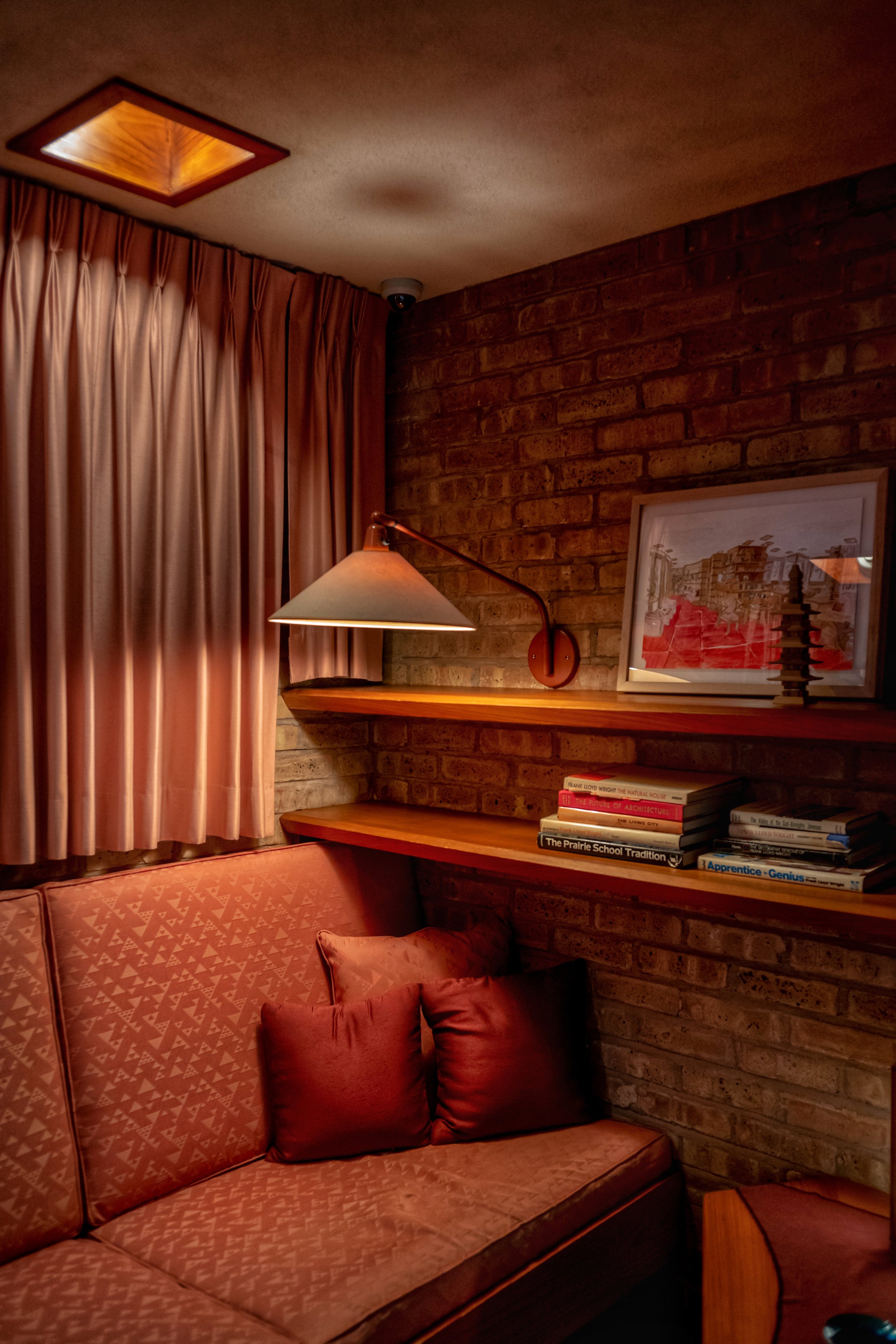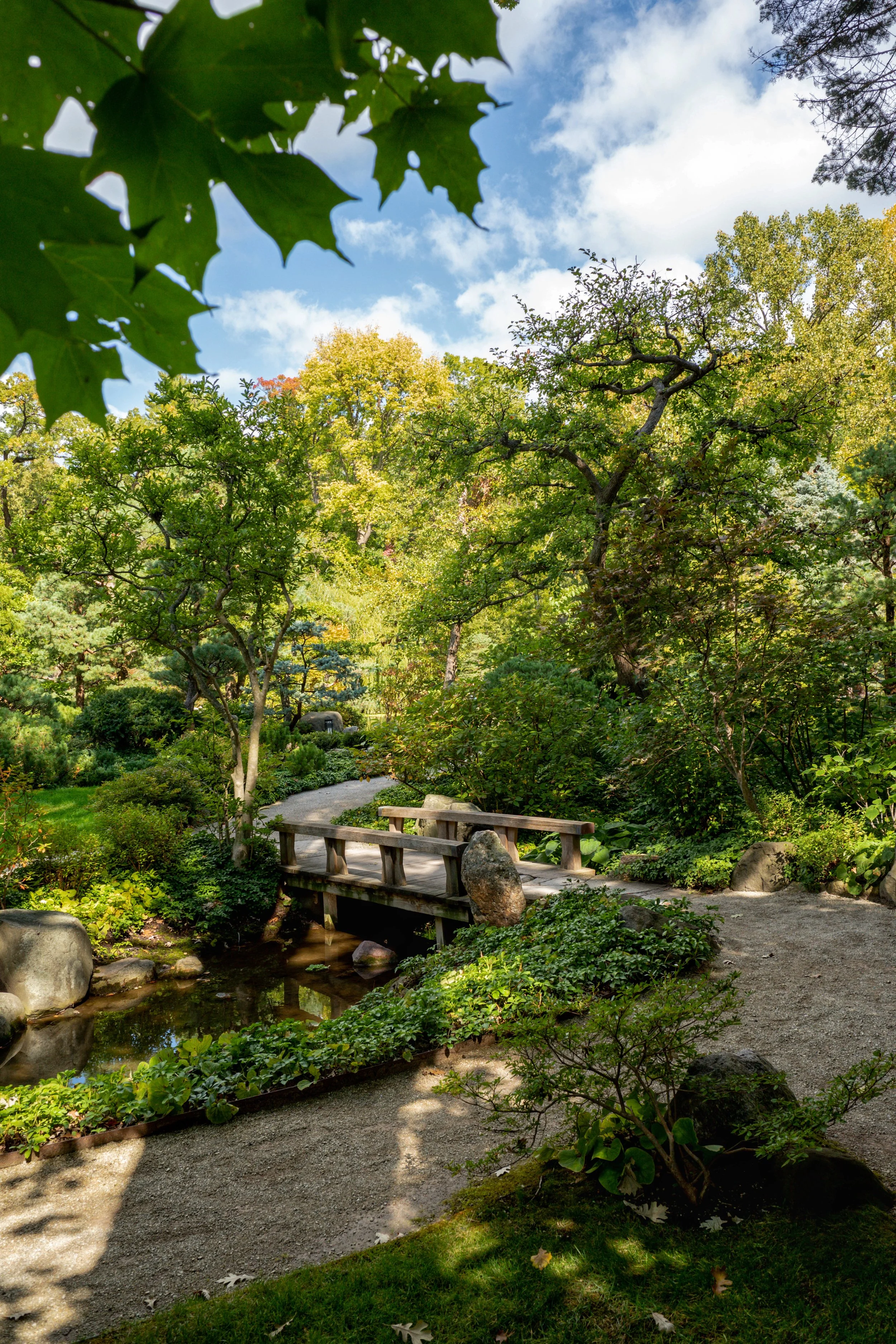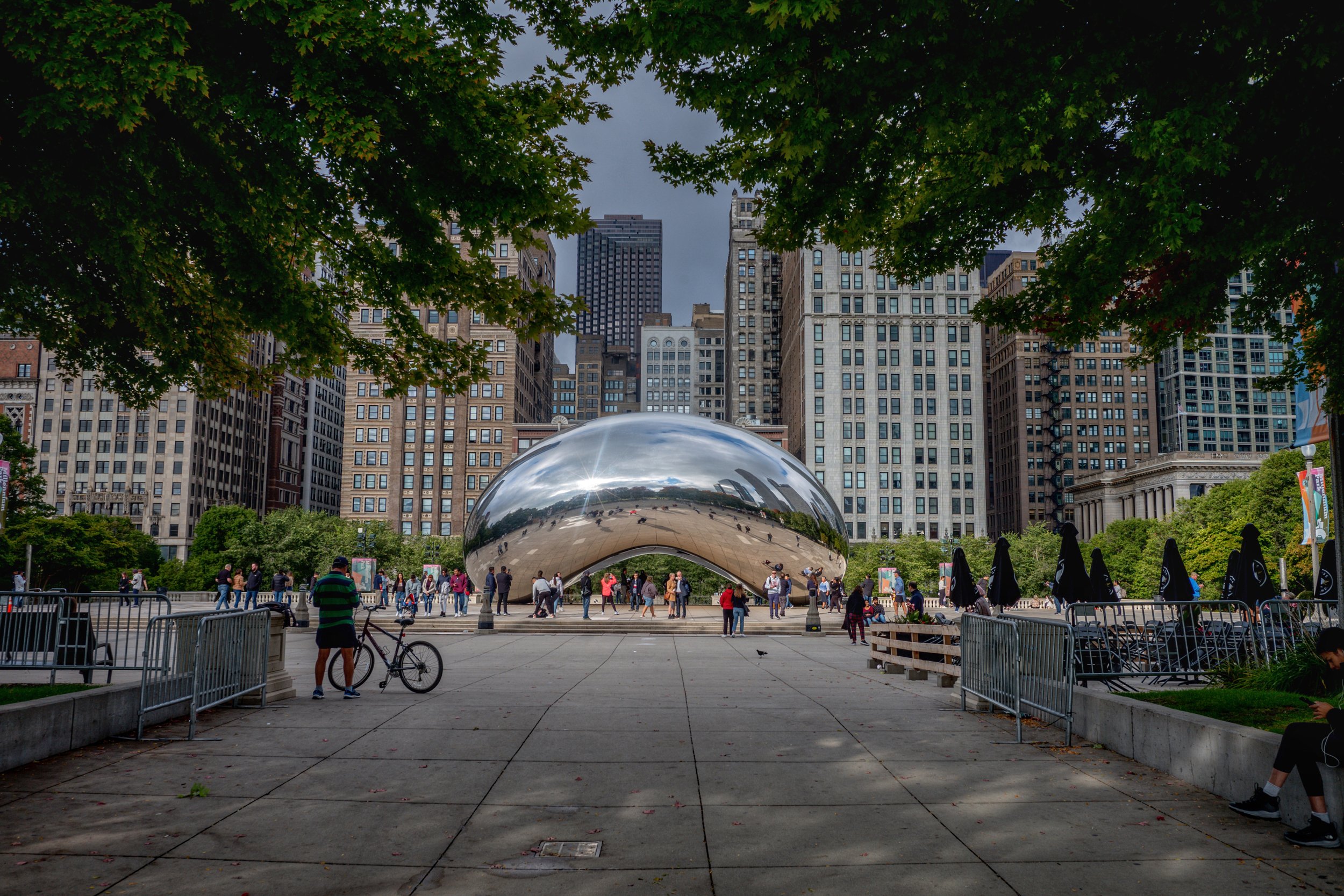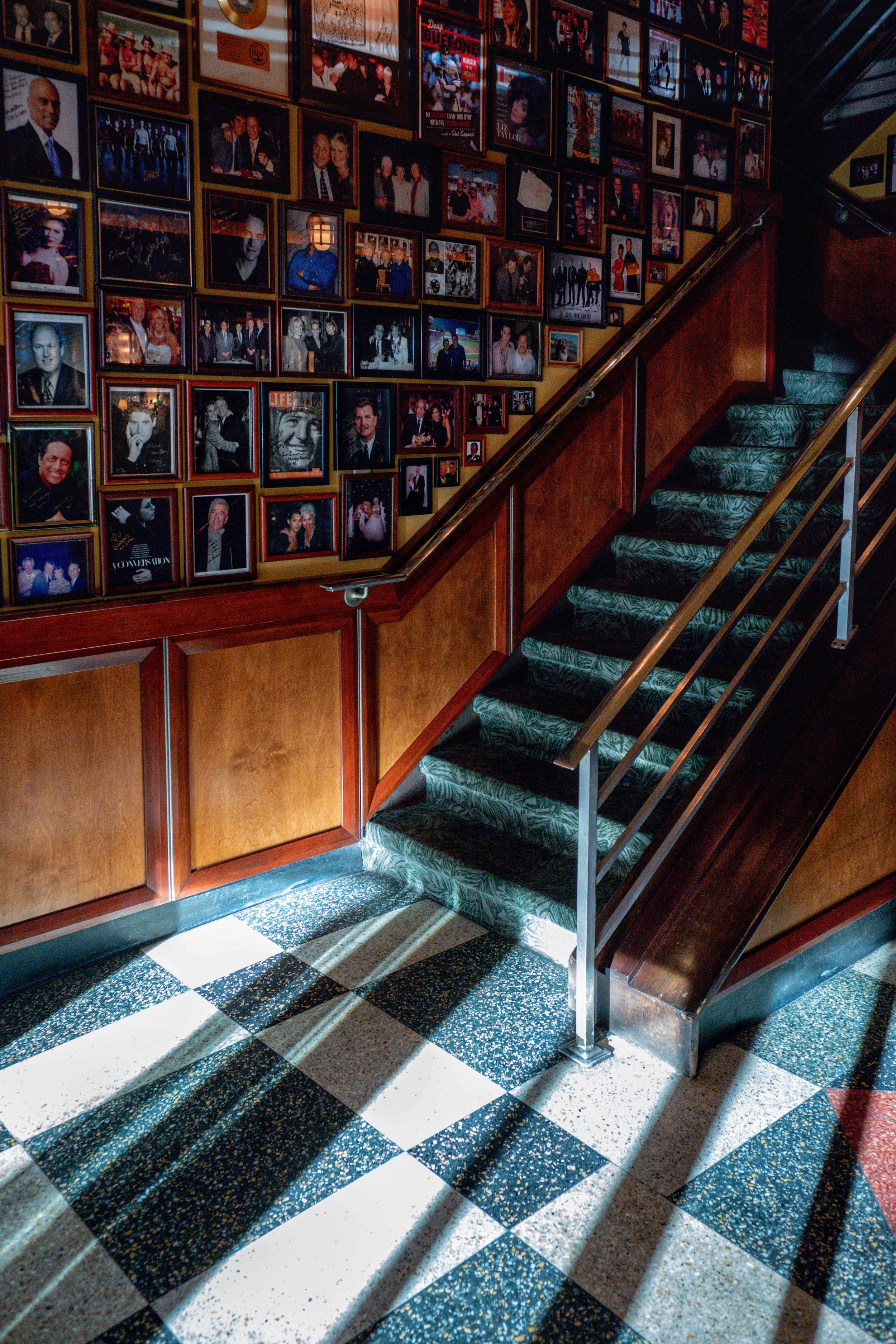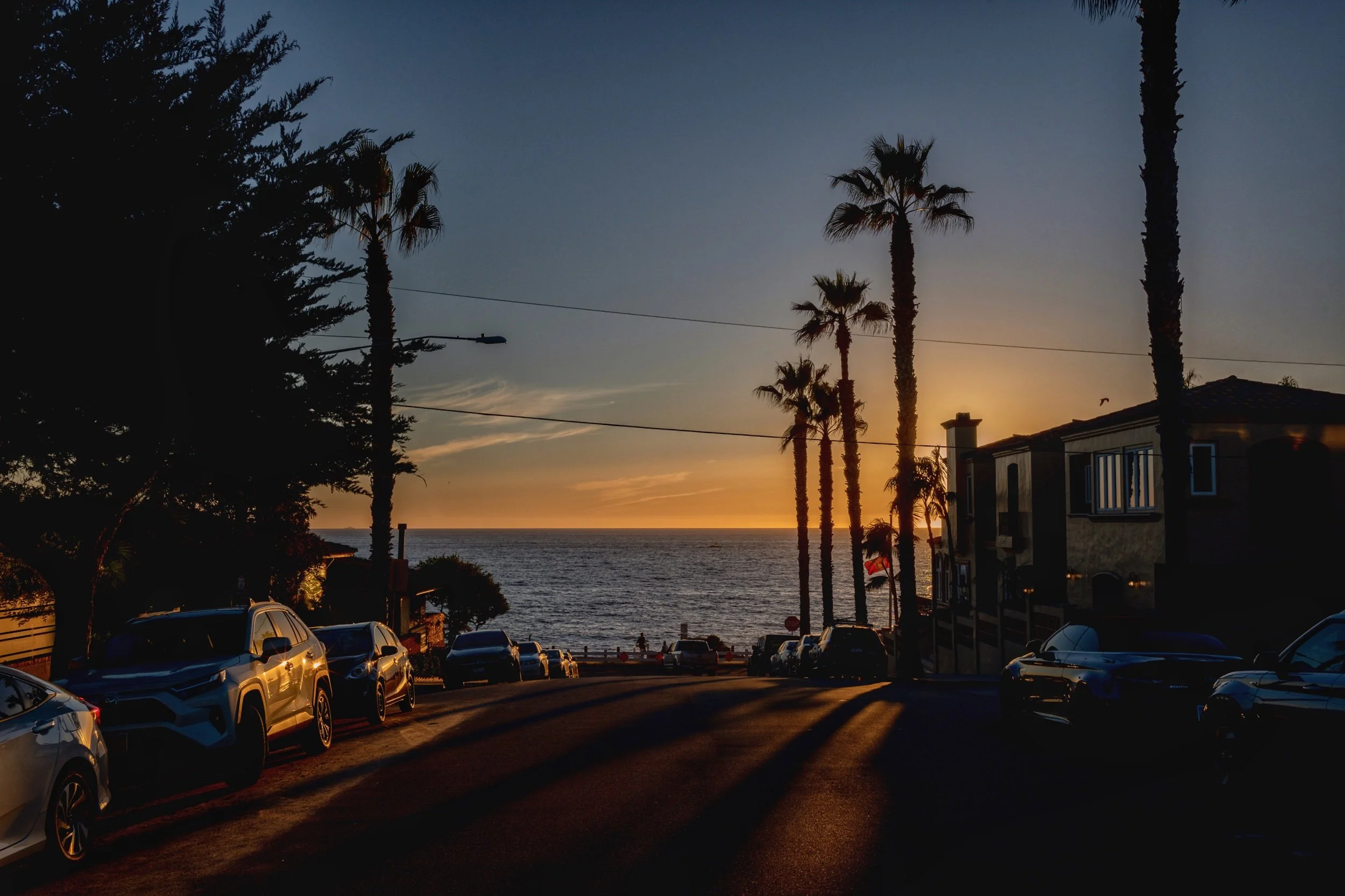Frank Lloyd Wright Road Trip
We partnered with Enjoy Illinois for a fun weekend exploring many of the Frank Lloyd Wright commercial and residential buildings in the state.
We recently took this amazing fall trip to Illinois. If this post inspires you to travel to Illinois, make sure to check ahead for up-to-date events, exhibits and opening hours at any attractions. Road trips often call for roadside attractions and pit stops at diners, but did you know that you can also go on an architectural road trip? Fans of Frank Lloyd Wright can hop between Chicago, Oak Park and Rockford over a four-day weekend to see multiple buildings by the designer. While you could spend more than a week exploring Wright’s work just in Illinois, we wanted to show off how much you could do with limited vacation time. Even though our time was short, we were able to see six of his buildings in three towns. We started in Chicago, and made our way west from there (scroll to the end of this article for some nitty gritty planning tips to execute this trip on your own).
Sunset view at 360 Chicago
Chicago’s Architectural Scene
Like all of our wanders through Illinois, we started our trip in Chicago. We always have a great time in the “Windy City” and visiting in the fall was no exception. The autumn weather was perfect, the energy was lively, and the food was delicious. We booked a room at The Drake Hotel, a beaux-art hotel that was built in 1920 and is a member of Historic Hotels of America, which helped to set the mood for our architecturally-themed trip.
A Walk Through Time
Wanting to immerse ourselves in as much architectural history as possible, we booked the Chicago Architecture Center: A Walk Through Time Tour. If you have never been to the Chicago Architecture Center, just north of Millenium Park and a 20-minute walk from our hotel, it deserves a dedicated visit. The center features nearly 10,000 square feet of exhibit space with super-sized models and views of iconic skyscrapers, making it a must-see.
Our 90-minute tour gave us a comprehensive look at the city’s architectural history by viewing buildings in chronological order, from early skyscrapers to new supertall buildings (300-600 meters in height) that make up the Chicago skyline. Why is this important when exploring the buildings of Frank Lloyd Wright? Because his work, and those of his students, was influenced by what was happening around them.
We ended our first evening high above the city at 360 Chicago. A observation deck offering breathtaking views of the Chicago skyline. You do not want to miss seeing the sunset from here, as the views were incredible. Also be sure to grab a drink at Cloud Bar, a 18 seat cocktail on the 94th floor. There was definitely a touch of romance in the air as the sun’s rays fell over the dreamy Chicago skyline. Tomorrow, we’d dive into the life and works of Frank Lloyd Wright, but first...
Sunset view at 360 Chicago
Prosecco at the Cloud Bat
Sunset at Cloud Bar
Chicago Skyline at Oak Street Beach
Who Was Frank Lloyd Wright?
While many know Frank Lloyd Wright as one of the most prominent architects in American history, not everyone knows how or why he became important. Below is a little historical background to set the stage for our road trip.
Born in 1867, Wright started his career in architecture in 1887 at Adler & Sullivan, a prestigious architectural firm in Chicago. At the age of 22, after marrying his first wife, he started designing his first home for his growing family. By 1893 Wright had left the Adler and Sullivan firm and set out on his own.
Wright built a reputation around Prairie-style design, emphasizing the horizontal lines of nature and the building’s organic surroundings, which mimicked the long, low horizontal prairies of the American Midwest. His designs incorporated low-pitched roofs, deep overhangs, and long rows of casement windows, allowing in natural light and emphasizing the horizontal view of the world outside.
While his contemporaries in the late 1800s were still mimicking what they saw in Europe, Wright felt that America was worthy of its own architectural style that showed off the true American landscape, as well as embracing technology and new ideas being presented at the turn of the century. Wright’s innovative style spanned a seven-decade career, designing more than a thousand buildings and seeing over 500 built, before dying in April 1959.
Chicago city skyline
For more information on the life and impact Wright had on the American art and architecture scene, check out franklloydwright.org.
Frank Lloyd Wright in Illinois
Planning our Wright road trip was a no brainer. We have always been big fans of Wright’s designs and were excited to see more of his projects in person. The attention to detail and innovation that Wright provided his clients shows how far ahead of the curve he was in his day.
One thing you need to know about Wright is that his buildings were considered a work of art (and still are) that you could live in. He had the final say on everything, including the furniture. He viewed the building's furnishings and interior design as crucial to the work's complete aesthetic. While touring “Little Gem” we learned that Wright would do surprise drop-ins to ensure nobody introduced new furniture to the space in any of the buildings he designed.
From Chicago to Rockford, it was time for us to explore the public spaces and residential properties that make Illinois one of the best places to tour Wright buildings.
Chicago
The Rookery (1905): One building you never want to miss when you are in Chicago is The Rookery. The Rookery holds one of the most spectacular interior spaces in the state, featuring an elaborate two-story lobby and light court that were renovated by Wright in 1905. Despite its name, this building isn’t just for the birds. Be sure to pop in on your next trip to marvel at this unique space in Chicago's downtown Financial District.
Charnley-Persky House Museum (1892): Designed by Louis Sullivan with assistance from his junior draftsman at the time (you guessed it–Frank Lloyd Wright), the Charnley-Persky House is an insightful look into Wright’s early work. The house is recognized as a pivotal work of modern American architecture as it rejected the historically accepted designs of the age.
Interiors of Charnley-Persky House
The Charnley-Persky House is strong in its symmetry and quite simple compared to the ornate houses of the late 1800s. It’s also notable that Wright played a big role in the designing of the house, much more significant than a typical draftsman would at the time. It seems that Sullivan knew Wright was both talented and innovative.
Frederick C. Robie House (1910): Admirers of Wright’s work must also visit the Frederick C. Robie House. This is a quintessential Prairie-style home that was once named by the American Institute of Architects as one of the ten most significant buildings of the 20th century. Wright’s inspiration for this design was the flat, expansive plains of the American Midwest. Notable features include strong exterior horizontal lines, rows of art glass windows, and natural materials like brick and wood.
Oak Park
Just outside of Chicago, you will find the suburb of Oak Park, along with more Wright buildings that you could cram into a weekend. Fun fact: Oak Park is home to more Frank Lloyd Wright projects than anywhere else in the world. You can find a map here. We prioritized two of his most notable buildings– his personal home and the Unity Temple.
Frank Lloyd Wright Home and Studio (1889): We had the chance to tour Wright's personal home where he lived with his first wife and six children. Wright’s goal was to create a functional space for his family. He edited and revised the design of the structure multiple times until it was just right. With complete creative control, he was able to stretch his imagination incorporating the simplicity of Japanese design- which highly influenced Wright’s work throughout his life.
It’s always nice to get a peek behind the veil to see how architects design and style their own homes. Our favorite part of this house was the original Frank Lloyd Wright furniture featured throughout. It's believed his first experiments with crafting furniture took place in his own home and we recognized his characteristic straight lines.
Frank Lloyd Wright’s Unity Temple (1909): We took the self-guided interior tour of this National Historic Landmark, which has also been a UNESCO World Heritage Site since 2019.
The Unity Temple was built between 1906 and 1908 for the Unitarian Universalist congregation, and dedicated in 1909. Wright’s father had been a Universalist preacher and Wright identified with the humanism of Unitarianism.
Unlike traditional churches at the time, Wright opted for a monolithic cube shape with no windows and an exterior of exposed concrete. The result is a rather imposing facade that again rejected the traditional religious architecture of the time. The Temple is yet another example of how Wright was a pioneer in his field, pushing the boundaries of what people thought architecture should be.
Rockford
Moving west of Chicago and Oak Park, you will come to Rockford, where you will find what we think is one of the most unique residential homes Wright ever designed.
Facade of the Laurent House
The Laurent House (1952): Wright’s “Little Gem”: The Laurent House was commissioned by Kenneth Laurent, a disabled World War II veteran who was confined to a wheelchair. This is Wright’s only structure that was specifically designed for a client with a physical disability.
Interiors of the Laurent House
Wright was incredibly thoughtful not only in the design of the home but also the furniture within. Chairs and lounges sat low so that guests and Laurent would be at eye level. Wright was so enamored with this home that he referred to it as “Little Gem,” thus cementing its nickname in history. The home design was ahead of its time and decades before the American Disabilities Act’s accessibility guidelines.
Interiors of Laurent House
Interiors of Laurent House
While in Rockford, we recommend a visit to Anderson Japanese Gardens. One of Wright’s cultural inspirations was Japanese design. While the gardens weren’t established until 1978, the garden is immaculate, with waterfalls, koi ponds, and streams nestled throughout. We think Wright would have enjoyed visiting and found inspiration along the same paths we walked. We even caught the first signs of fall as some of the trees were beginning to change colors.
Anderson Japanese Gardens
Anderson Japanese Gardens
If you have the time, there are two more Wright stops you can check off your list on your way to Rockford– Muirhead Farmhouse in Hampshire and the Frank Lloyd Wright Pettit Memorial Chapel in Belvidere.
FLW Road Trip Planning Guide
While we all wish we could jump in the car and have adventure find us, sometimes a little planning can go a long way, especially when you want to tour the Frank Lloyd Wright properties in and outside of Chicago.
How to tour Frank Lloyd Wright properties
Please remember that many of Wright’s designs are still private residences or businesses. Research the tour opportunities at any property you wish to visit before you travel.
Most tours that are open to the public are operated by the Frank Lloyd Wright Trust. You will need a ticket to enter and tour any of the properties they manage, whether it is a guided or self-guided tour. The Rookery is free to visit Monday through Saturday, but if you want a guided tour, the Trust provides those for a fee on weekdays.
Two properties not managed by the Wright Trust on our itinerary were The Laurent House and the Charnley-Persky House Museum. You will need to book tickets directly through The Laurent House Foundation, Inc. and Society of Architectural Historians in order to tour each property.
Morning scene at Cloud Gate
Chicago
Where to stay in Chicago
The Drake Hotel is one of Chicago's most recognizable hotels. When you book, make sure you ask for a room with a lakeview. There is nothing better than watching the sunrise over Lake Michigan. The hotel also features an outdoor pool, four restaurants and nightly turn-down service.
Where to eat in Chicago
Naturally, you can’t go to Chicago without eating, and if you know us, you know that we love a gorgeous restaurant interior with food to match.
If you are in need of breakfast, definitely check out Cafecito, an amazing Cuban coffee house and cafe. Cafe on Oak, inside of the Drake Hotel, is another great option. We found Kasama, a bakery and modern Filipino restaurant that does extraordinary things with food. You do not want to miss out on their baked goods.
Filipino breakfast at Kasama
Interiors at Kasama
When you are looking for jaw dropping views, grab a table at Cité, located at the top of Lake Point Tower. For a taste of the true meat and potatoes cuisine of the Midwest, you can never go wrong with Gibson’s Bar & Steakhouse. The staff is incredible and they make the dining experience very special. You’ll love it even more for the views of the Chicago River lit up by night. No wonder the locals enjoy it so much!
Interiors of Gibsons Steakhouse
Cocktails at Gibsons Steakhouse
If you need something a little more on the go, pop into the Plein Air Cafe & Eatery or Nella Pizza e Pasta, both of which are close to Robie House.
Plein Air Cafe
Oak Park
You can easily take a day trip from Chicago to the nearby suburb of Oak Park, which means you don’t have to switch hotels. You will want your walking shoes and a tasty restaurant option to keep you energized while you wander.
Where to eat in Oak Park
The Little Gem Cafe. Tucked just off Oak Park's buzzy Lake Street is this innovative French-inspired bistro with a relaxed yet elegant ambiance.
Rockford
About an hour and a half drive from Chicago, Rockford is a bit more than a day trip if you want to have time to explore. Plan on spending at least one night in this Midwest town to get a feel for why someone wanted a Wright home built and how he used the landscape to influence his design.
Where to sleep in Rockford
Embassy Suites by Hilton Rockford Riverfront offers large suites, perfect for travelers to spread out and relax during their stay. Your room includes a two-hour complimentary evening reception with drinks and snacks, plus a complimentary hot cooked-to-order breakfast each morning.
Interiors at Embassy Suites
Where to eat in Rockford
Prairie Street Brewing Co. serves up world-class beer, all handcrafted locally, plus the food menu changes with the seasons and what ingredients are available at local farms and businesses. Be sure to check the website for the live music performance schedule.

